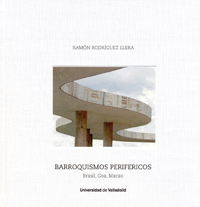PERIPHERAL BAROQUES. BRAZIL, GOA, MACAO
Keywords:
baroques, Brazil, Goa, Macau, colonial periodSynopsis
Baroque was the dominant artistic style for most of the colonial period in Brazil, where it emerged in the early 17th century. It was introduced by Catholic missionaries, especially the Jesuits, who were primarily responsible for the catechization and acculturation of indigenous peoples during Portuguese colonization, given the close relationship between Church and State. Since the elites did not bother to build palaces or sponsor the secular arts until the end of the colonial presence, and since religion exerted an enormous influence on daily life, it follows that much of the Brazilian Baroque legacy is confined to sacred art: architecture, statuary, painting, and carving for the decoration of churches and convents or for private worship. The formal characteristics of the Baroque have generally been described as belonging to a dynamic, narrative, ornamental style, full of dramatic contrasts, cultivating a seductive plasticity, without neglecting great pragmatism and effective rhetoric. Brazilian Baroque art, of classical European ancestry, as a style implanted in newly colonized lands, emphasized its more purely functional aspect, lending itself, in addition to fulfilling a purely decorative purpose, to the spread of Catholic doctrine and European customs among the neophytes of Indigenous and Black people, encouraging them to cultivate and confirm the faith and traditions of the Christian conquerors, who had succeeded in dominating and exploiting this vast territory by imposing their culture upon it. Over time, local artisans began to contribute original characteristics to the Baroque imported from Europe, so this acclimatization is considered one of the first testimonies of the formation of a truly national identity culture.

Price
41.35 EURPublished
Right Holder
Ediciones Universidad de Valladolid y autor(es)/autora(s) 2019License

This work is licensed under a Creative Commons Attribution-NonCommercial-NoDerivatives 4.0 International License.

